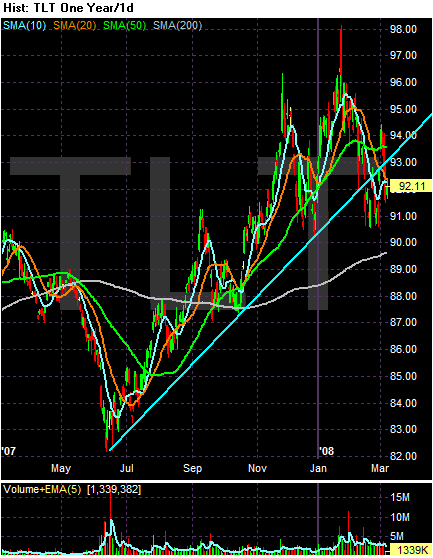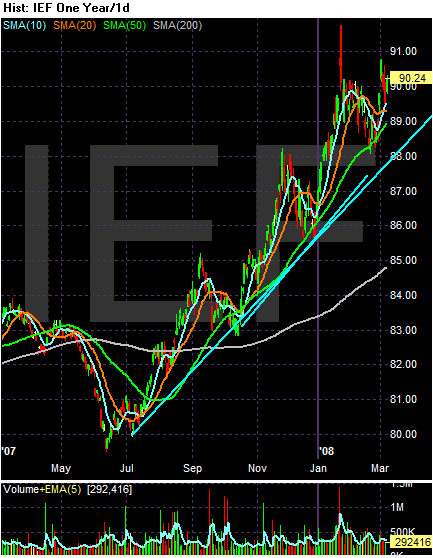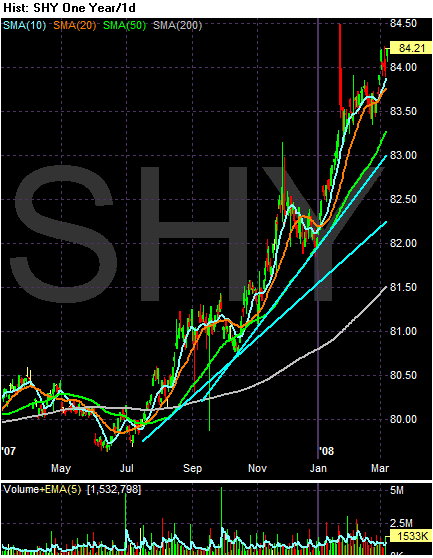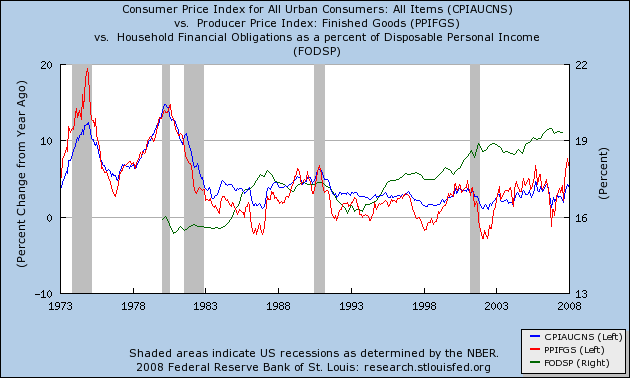
While the 20+ year end of the Treasury Market has dropped below its year-long trend line, it isn't selling off that hard.

The 7-10 year part of the market is also still clearly in an uptrend.

The short end is still rallying as well.
Let's review what moves the bond market.
1.) Interest rate policy. When the Fed is lowering rates, previously issued bonds (which have a higher coupon) are more valuable. This means investors will buy them, increasing prices.
2.) Safety: In times on uncertainty, investors seek safe havens. That means government bonds.
So -- we have two strong reasons for the Treasury market's rally over the last year. But
3.) Inflation eats away at the interest rate received by bond investors.
Considering we've had some really nasty inflation reports lately, the bond market should be selling off, right?
Maybe not. While I am still extremely worried about inflation, my friend New Deal Democrat is not. He offers the following chart and explanation as to why inflation is not a problem.
Below is a graph showing how inflation tends to play out over economic cycles. The blue line is consumer inflation (cpi). The red line is producer inflation (ppi) which is the rate at which costs are increasing to producers. The green line is household debt.

A regular pattern of cpi vs. ppi inflation unfolds over economic cycles. Consumer inflation is relatively tame, but consumer inflation starts out very low, and considerably less than consumer inflation (the red line is under the blue line). Simply put, producer costs aren't rising as fast as consumer prices can be increased, and increased production and sales leads to increased profits. Over time, both consumer and producer inflation increases. Ultimately, producer prices increase faster than consumer prices.(the red line is over the blue line). Producers aren't able to pass on their increased costs to consumers, and their profits decline. When their profits decline, they cut back and lay off employees. A recession ensues as consumers pull in their belts. Prices, especially producer prices, decline, thus setting off the next cycle.
In the graph above, you can see that just before every single recession, both the red and blue lines are going up, and the red line has overtaken the blue line. In other words, producer prices are rising, and have overtaken consumer prices. When the recession hits (the shaded area) both the red and blue lines decline, meaning that both consumer and producer inflation are decreasing.
Thanks to NDD for letting me use his piece.